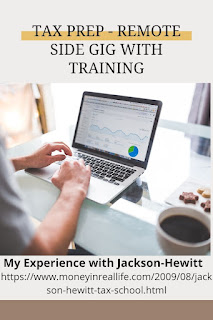How to get the best clothing deals on Poshmark
Since I have been both a buyer and seller on Poshmark, I can give you an insider's view of how to get the best deals on that platform. Inflation mitigation requires that we closely watch and prioritize all of our spendings, but, but, but we still need clothes!
Once COVID lockdown changed how we dress for work, the vintage and second-hand clothes markets, both real-life and online shopping marketplaces, have been saturated with beautiful women's clothes. The clothing is well-tailored and very suitable for the office, but no one wants to wear this wardrobe working remotely from home.
There are great online shopping deals and platforms for dresses, shoes, electronics, ... heck, they even have fishing gear and household items. Some discount shoppers and sellers focus on Ebay, Mercari or Etsy, for example.
In my case, I focused on using Poshmark to pick up new-to-me items for my capsule wardrobe and even sell items from my own closet https://poshmark.com/closet/isabettarose. (I'd rather sell or donate gently used clothes than feed the fast-fashion marketplace looking for new, cheap alternatives).
Top 3 Reasons You Will Get a Great Deal on Poshmark from a Seller
1. It's easy! You can search by brand, color, most recently listed, lowest cost to highest cost, etc. Here's a screenshot of a recent search I did for Coach brand bags. The results returned options priced everywhere from $27 to $375 in the first row alone.
This is the first four of HUNDREDS of Coach bags that were listed at incredible prices.
 |
| Search "Coach Bags" on Poshmark - First 4 Items Listed $27-$375 |
2. Easy discounts, too. When you "like" an item you see on the app, you will receive all additional specials that the seller may offer on the item.
Notice the numbers next to the redline hearts below the photo -- that's how many people liked the item. Twenty-six people liked the Vintage Coach Tan Suede Bag, for example.
Periodically the Poshers, i.e., people who open a closet, will offer special discounts to "likers."
The Poshmark team offers special shipping discounts on certain days, as long as an item is offered to likers at 10% - 40% off the lowest price in the last 90 days. This is good news for anyone who likes the item, as you are going to receive that discount on the item, along with reduced or free shipping.
Protip - You can also filter for items that are NWT (new with tags). You will receive the item at the negotiated discount price and it's brand new! Now that's a deal.
3. First-time buyers can get an initial purchase discount when they set up an account and make the first purchase over $5. It just requires using a code at check out. You can use my code @isabettarose or any other posher's closet name with the @ sign ahead of it.
The Good and the Bad "Real Life" Examples
Good- I used Coach bags as my example in this blog because I purchased this beautiful vintage Coach bag last year from a Postmark seller @faboy
 |
| My Burgundy Suede Coach Hampton Bag |
I love love love!!!! my Coach Hampton bag. I had been searching for a new version of this bag style, as I once owned the same model in a light tan color and literally wore the purse out. Since they weren't being made any longer, I hit the vintage sites and found this model in a different color.
At first, I backed away from the deep burgundy. But then I realized that it is really a beautiful, classic pop of color for most of the items in my closet. In fact, this burgundy suede has held up better, so far, than my tan suede bag, in great part because of the color. If anything has stained it yet, I can't see it.
The price was 50% of what I would pay for a new lower-end Coach bag, plus it was shipped to me in perfect condition.
You can probably get even better buys now that the second-hand clothing marketplace is ever more saturated with pretty wonderful deals.
- If I hadn't gotten a product that matched the photos and description on Poshmark, I could have filed a return request. The app offers buyer protection. Any type of return request that is validated as "not matching initial posting description" is a ding against a seller's Poshmark account status, so sellers do the best they can to make sure every customer is happy!
For items over $500, they offer brand authentication services as well. If you are looking for Chanel or Hermes or Louis Vuitton, I'm sure this authentication would be very valuable.
- Also, sellers are reviewed with stars and notes, so it's even more incentive to keep customers happy.
The Bad and How to Avoid It.
As with any online transaction, beware of scammers!
- I have heard about one luxury-item scammer on the site. But Poshmark can take action against any that scammer, or any others, if you conduct the sale via the site. Don't be dupped into going offline to conduct the transaction, there is no protection there.
- Also, beware of "mystery box" offerings. Poshmark can't help you with these offerings as nothing is promised in the description.
- Only use a credit card that handles disputes well. I always use my American Express card as they have backed me up on every single dispute in the last twenty-five years of holding the card.
Have you used Poshmark, or Ebay or Etsy and scored an unbelievable deal? Or maybe you faced a hurdle that you would like to share? Please comment below!
 The speakers included world-class financial experts who boiled down tough topics to the basics.
The speakers included world-class financial experts who boiled down tough topics to the basics. 
.png)










